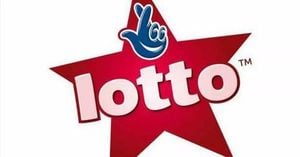Between March 2024 and February 2025, new housing permits in France saw a significant decline of 10.7%, with the Île-de-France region experiencing an even steeper drop of nearly 23.3% in construction starts. This downturn marks a historic contraction in the housing market, yet the region continues to attract buyers seeking a connected, sustainable, and valuable living environment. As the market adapts, what signals should one observe to anticipate the dynamics of 2025?
The Île-de-France real estate market is undergoing a transformation, facing pressing issues such as land pressure, demographic needs, and energy transition. In 2025, the new housing market is characterized by a more selective offer, transitioning financing, and increasingly targeted projects. Despite a notable slowdown in construction, demand remains robust, particularly in well-served areas. In February 2025, housing permits in France were only 75% of their pre-crisis level.
According to the latest report from SDES, the number of housing starts in Île-de-France has fallen to its lowest level since 1980. This decline, attributed to rising construction costs and revisions to credit granting rules, does not overshadow a structural reality: demand is still strong, especially in areas with good transport links. Professionals are focusing on quality, concentrating programs in strategic hubs.
Many municipalities in the inner and outer suburbs are experiencing a pronounced dynamic. Cities such as Massy, Noisy-le-Grand, Cergy, and Saint-Ouen are thriving due to their proximity to Grand Paris Express stations, cultural or educational infrastructures, and still reasonable prices. New housing programs in Île-de-France are emerging in these developing territories, with a particular emphasis on comfort and energy performance.
The Grand Paris project is reshaping the real estate equation. By 2030, 68 new stations will be established on the Grand Paris Express network, offering new connections to areas like Villejuif, Saint-Denis Pleyel, and Le Blanc-Mesnil. As a result, entire sectors are gaining attractiveness for both developers and prospective buyers.
In 2025, the profile of buyers in Île-de-France remains diverse, including first-time buyers, rental investors, and households looking for secure, well-located, and sustainable properties. These distinct profiles share a common goal: to combine asset value with user comfort. First-time buyers are once again a priority target, as access to credit conditions are improving. The average mortgage rate fell to 3.35% in the third quarter of 2024, down from 3.62% at the end of 2023. Consequently, new credit production is up by 15%, accompanied by longer loan durations averaging nearly 22 years.
Since April 1, 2025, the zero-interest loan (PTZ) has been made available for new housing purchases, subject to income conditions. The attractiveness of programs is further enhanced in medium-sized cities and well-served neighborhoods, such as Meaux, Melun, Évry-Courcouronnes, and Poissy.
Investors are also returning to the real estate market in France, motivated by price stability and the legal security of the VEFA (Vente en l'État Futur d'Achèvement). Although sales in bulk to institutional investors fell by 3.5% by the end of 2024, sales to individuals increased by 4.6%. The advantages of new properties weigh heavily in decision-making, with ten-year guarantees, reduced notary fees, controlled costs, and energy quality responding to a need for security in an uncertain macroeconomic context.
Île-de-France remains a unique region with strong demographic dynamics, transport networks, and economic hubs. Despite the decrease in volumes, the new housing market is organizing around targeted, sustainable projects that better align with current expectations. Developers are prioritizing strategic land near RER stations, future metro lines, or employment centers. In 2025, buyers are no longer just choosing a "home" but rather a "neighborhood lifestyle." This positioning is championed by players like Interconstruction, which focuses on delivering high-quality living experiences in promising communes in the western, southern, and northern parts of Île-de-France.
The construction sector is currently undergoing an adjustment phase, with a decline in starts, a tightening of supply, and evolving needs reshaping the market's landscape. Demand is still driven by young buyers and cautious investors. In light of these changes, developers face the challenge of designing exemplary residences in well-connected and attractive environments. The Grand Paris, new mobility solutions, and environmental requirements form the foundation of the new city of tomorrow.
In a parallel development, as the residential real estate market shows signs of recovery, driven by lower mortgage interest rates, platforms for real estate listings are vying to capture this renewed activity. SeLoger, a leading player in the market, aims to strengthen its connections with professionals amid this recovery. According to a YouGov study conducted in February 2025, SeLoger is the preferred real estate site for the French, with nearly 50 million visits per month and the most consulted 100% real estate app in France.
In the first quarter of 2025, approximately 1500 new clients joined SeLoger, marking a historic start to the year. Damien Giordano, Director of Regions and Luxury at SeLoger, emphasized the importance of enhancing local presence to support real estate professionals during this market recovery. He stated, "Our goal is to reinforce the SeLoger reflex in each region and strengthen our proximity with partners, adopting a more targeted approach to local dynamics."
SeLoger's strategy for 2025 includes three main axes: providing more personalized support to clients, enriching the value proposition across France with effective solutions tailored to local market realities, and increasing targeted investments compared to 2024 to generate more qualified contacts. The volume of qualified contacts sent to professionals has risen by 29% in one year, significantly impacting their business.
To enhance proximity with clients, SeLoger plans to leverage its territorial network, which includes over 70 field collaborators and eight regional directors. The company aims to create connections with around 900 professionals across France through a series of events, sharing local market data and discussing the added value of their solutions.
Moreover, SeLoger is increasing its marketing investments by 25% in 2025 compared to 2024, which will benefit clients by boosting site audiences nationwide. In Gironde, for instance, public campaigns in urban display and digital formats have increased the number of active users in Bordeaux by 39%. In Île-de-France, a digital campaign with over 1 million impressions has been launched, while investments in the luxury segment are up by 30% compared to the previous year.
In March 2025, SeLoger initiated a new TV campaign expected to reach nearly 120 million contacts through a comprehensive media plan. Giordano expressed confidence in SeLoger's ability to innovate continuously, stating that the company is committed to enhancing the user experience on its platforms and apps to facilitate connections with real estate professionals.





